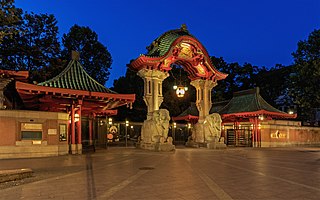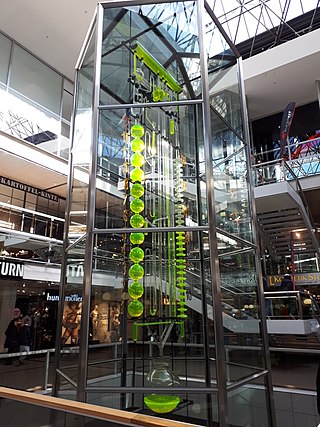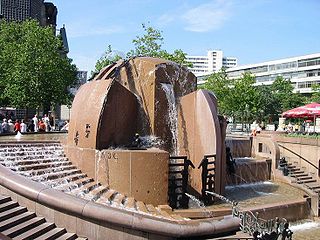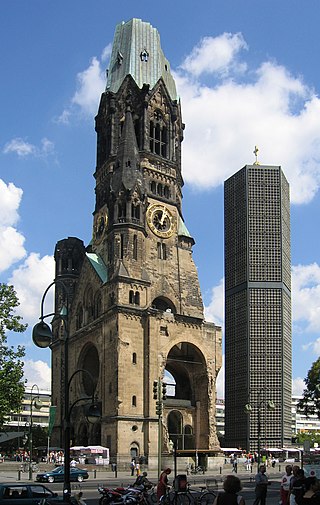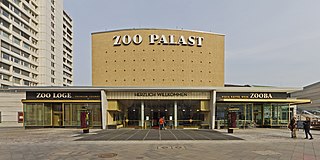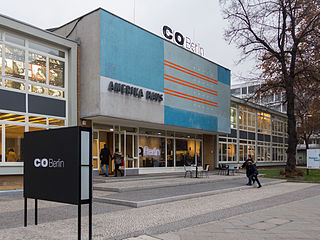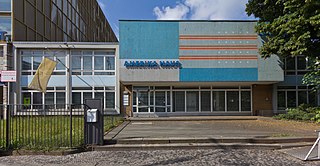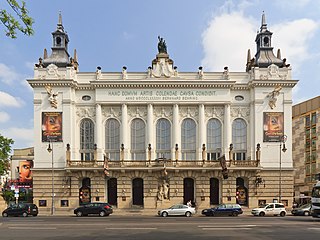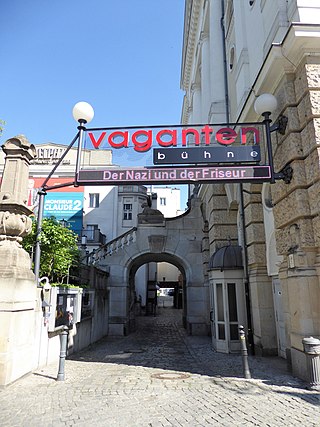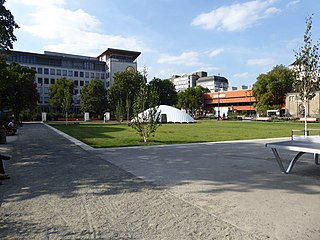Self-guided Sightseeing Tour #4 in Berlin, Germany
Legend
Guided Free Walking Tours
Book free guided walking tours in Berlin.
Guided Sightseeing Tours
Book guided sightseeing tours and activities in Berlin.
Tour Facts
3.2 km
72 m
Experience Berlin in Germany in a whole new way with our free self-guided sightseeing tour. This site not only offers you practical information and insider tips, but also a rich variety of activities and sights you shouldn't miss. Whether you love art and culture, want to explore historical sites or simply want to experience the vibrant atmosphere of a lively city - you'll find everything you need for your personal adventure here.
Activities in BerlinIndividual Sights in BerlinSight 1: Berlin Zoological Garden
The Berlin Zoological Garden is the oldest surviving and best-known zoo in Germany. Opened in 1844, it covers 35 hectares and is located in Berlin's Tiergarten. With about 1,380 different species and over 20,200 animals, the zoo presents one of the most comprehensive collections of species in the world.
Sight 2: The Flow-of-Time Clock
The Clock of Flowing Time is a 13 metres (43 ft) high water clock extending over three floors in the Berlin Europa-Center. The clock was designed by the French artist Bernard Gitton and set up in 1982.
Sight 3: Europa-Center
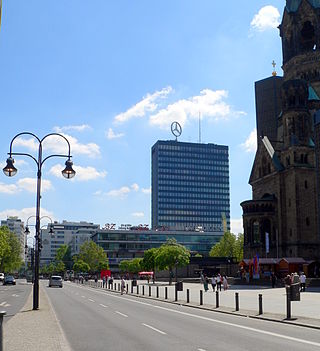
The Europa-Center is a building complex on Breitscheidplatz in the Charlottenburg district of Berlin, with a shopping mall and a high-rise tower 86 metres (282 ft) tall. Built between 1963 and 1965, by 2003 it had been designated as a historically preserved building.
Sight 4: Weltkugelbrunnen
The Weltkugelbrunnen is a water feature in front of the Europa-Center in Breitscheidplatz, Berlin.
Sight 5: New Kaiser Wilhelm Memorial Church
The Kaiser Wilhelm Memorial Church, mostly just known as the Memorial Church is a Protestant church affiliated with the Evangelical Church in Berlin, Brandenburg and Silesian Upper Lusatia, a regional body of the Protestant Church in Germany. It is located in Berlin on the Kurfürstendamm in the centre of the Breitscheidplatz.
Sight 6: Bikini Berlin
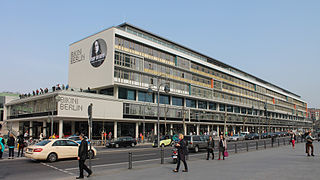
The Bikini House is a listed building on Budapester Straße in City West in the Berlin district of Charlottenburg. The Bikini House is part of a building ensemble that today bears the name Bikini Berlin, historically the complex was called Zentrum am Zoo. These also included the high-rise building on Hardenbergplatz, the Zoo Palast, the Small High-Rise and the parking garage at the Zoo.
Sight 7: Zoo Palast
The Zoo Palast is a cinema in the western center of Berlin in the district of Charlottenburg. The cinema in Hardenbergstraße currently belongs to Premium Entertainment GmbH. The business was rebuilt and reopened on 27 November 2013.
Sight 8: Museum of Photography
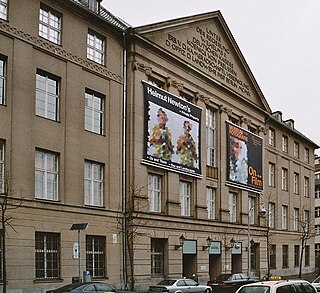
The Museum of Photography in the Charlottenburg district of Berlin, Germany, is one of the Berlin State Museums administered by the Prussian Cultural Heritage Foundation.
Sight 9: C/O Berlin
C/O Berlin is a private exhibition space for photography and visual media in Berlin. It is located in Amerika Haus Berlin by Zoologischer Garten station, Charlottenburg, where it has more than 2,500 square metres of space. C/O Berlin presents works by national and international artists, supports emerging talents, and organizes educational events on visual media and art. It was founded in 2000 by Stephan Erfurt, Marc Naroska and Ingo Pott and originally located in the old Royal Post Office (Postfuhramt). C/O Berlin is supported by a non-profit foundation under the direction of Stephan Erfurt. The deputy chairman is Dr. Andreas Behr.
Sight 10: Amerika-Haus
The Amerika Haus Berlin is an institution that was developed following the end of the World War II, to provide an opportunity for German citizens to learn more about American culture and politics, and engage in discussion and debate on the transatlantic relationship. Run by the American government until 2006, Berlin's Amerika Haus is one of many Amerika Häuser located across Germany.
Sight 11: Stage Theater des Westens
The Theater des Westens is one of the most famous theatres for musicals and operettas in Berlin, Germany, located at Kantstraße 10–12 in Charlottenburg. It was founded in 1895 for plays. The present house was opened in 1896 and dedicated to opera and operetta. Enrico Caruso made his debut in Berlin here, and the Ballets Russes appeared with Anna Pavlova. In the 1930s it was run as the Volkstheater Berlin. After World War II it served as the temporary opera house of Berlin, the Städtische Oper. In 1961 it became the first theatre in Germany to show musicals. Since then it has become the "German equivalent of Broadway extravaganzas", putting on plays and musical comedies.
Sight 12: Vaganten Bühne
The Vagantenbühne is a private theatre located near the Zoologischer Garten station and the Kurfürstendamm in the City West in Kantstraße in the Charlottenburg district of Berlin. The theatre has 100 seats and is now a functional building with studio character. It shares the building with the Quasimodo jazz club, the Qmodo Restaurant, and the Delphi Film Palace. In the immediate vicinity are the Theater des Westens, the C/O Berlin gallery and the Savoy Hotel opposite. Since 1980, the Vagantenbühne has been run as a gGmbH.
Sight 13: Steinplatz
The Steinplatz is a place in the Charlottenburg district of the Charlottenburg-Wilmersdorf district. He is located in the middle of Hardenbergstrasse opposite the University of the Arts (UDK) and was named after the statesman and reformer baron Heinrich Friedrich Karl vom and stone, a contemporary Hardenberg.
Share
How likely are you to recommend us?
Disclaimer Please be aware of your surroundings and do not enter private property. We are not liable for any damages that occur during the tours.
GPX-Download For navigation apps and GPS devices you can download the tour as a GPX file.
